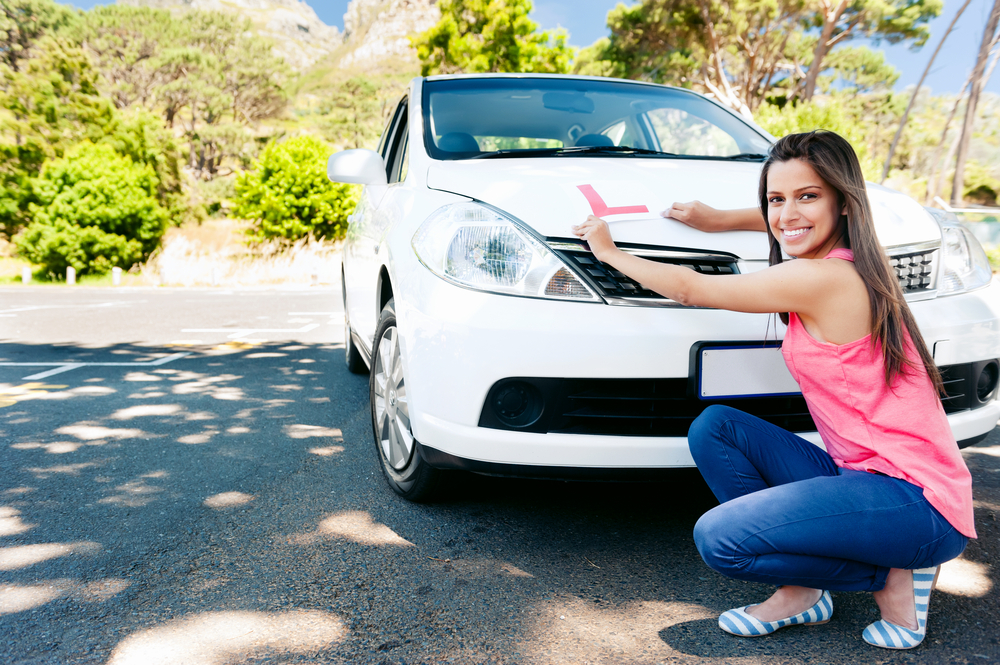If you’re a parent, there can be fewer hair-raising times when bringing up your children than the moment they say they want to learn to drive. So, if you’re faced with that situation right now, and you’re wondering what on earth you can buy for them that will be ideal for them to learn their skills in – short of a tank to keep them safe – then here are our top tips for picking the best car for a learner driver.
Keep the power down
Less is definitely more in the case of engine horsepower. When nervous first-time drivers are behind the wheel, giving them something which can do 0-100km/h in anything much less than ten seconds is not a great idea, especially when their right foot might slip during a bout of nerves in what should otherwise be low-speed manoeuvring. Better to stick to a car with a tiny engine, preferably 1.2 litre cars or less – and without a turbo. Not only will this keep them safe and out of trouble, but it will also be easier to insure if you declare you are using it as a vehicle to teach your children in, and which they will then go on to own and insure themselves.
Buy something simple
It’s tempting in this day and age to think that you need to give your screen-obsessed children a car with a high-tech interior, but the fewer distractions they have while learning to drive, the better. Driving a car is a complex task and anything which takes their focus off the road ahead is not going to help them at all. Ignore their pleading cries for something with the latest touchscreen tech and instead aim for a lower-spec model with a plainer dashboard.
It should be easy to drive
By this, we mean it should have good visibility out in all directions, so choose something with large windows all round – a hatchback is going to be better than a coupe with a narrower rear screen, for instance, and could help prevent parking dings when reversing. Pick something with a lot of adjustability in the driving position, both seat and wheel, so that your children can get comfortable no matter how short or tall they are. Choose something with clearly labelled controls and switchgear, making various ancillaries easier for the novice driver to use on the move. All of this will help them stay safe on the road as they find their way behind the wheel.

Choose something reliable
Assuming that whatever car your child is learning in will become their first set of wheels when they pass their test, pick a type of car with a good reliability record – the Japanese manufacturers, such as Toyota Cars and Honda Cars, have great provenance in this regard, as do Hyundai Cars and Kia Cars. Again, as we said earlier, the fewer distractions a new driver has, the better the job they can do behind the wheel while learning their skills. And if they’re constantly worrying that the cheap old banger you’ve bought them is liable to break down any moment, or its dashboard is lit up with an array of warning signs, then they’re probably not going to concentrate as much on the mechanics of driving as they will be fretting about getting either to their destination or home. There’s also the pure peace of mind aspect you’ll have as a parent, not having to worry about them being stranded somewhere remote if the vehicle breaks down.
Choose something economical
Similarly, if the car they learn in will be their main form of transport going forward, you want to pick something with an engine that’s easy on fuel. Motoring is expensive these days, what with the purchase price of cars new and used, and the costs of insurance premiums and servicing and maintenance expenditure and so on, so anything which will cut their fuel bills will be a help – and will again mean they’re not focusing on watching the fuel gauge dwindle down to nothing, but instead can concentrate on honing their driving abilities. The good news is that economical cars for first-time drivers are usually the ones with the least-powerful engines, which links into our first point about choosing the right vehicle.
Consider whether they need to learn ‘stick’
The manual gearbox is becoming a rare thing these days, while all electric cars in the future will be pure automatics. Therefore, unless your offspring is a devout petrolhead who one day wants to own a classic hot hatchback with three pedals and a gearstick, you might want to consider whether they need to learn how to drive a manual car. Having an auto-only licence (denoted by ‘code 78’) will not be the impediment to buying a car it was, say, 15 or 20 years ago, and the bonus is that automatic cars are far easier to drive than manual ones. Your child will only have to learn how to operate two pedals in an auto, rather than the third – the clutch – and so it will make the process of driving even easier for them as they’re focused purely on regulating speed and direction, and not trying to balance up the clutch and find the biting point at the same time; on a connected note, your nervous first-time driver cannot stall an automatic at any point.